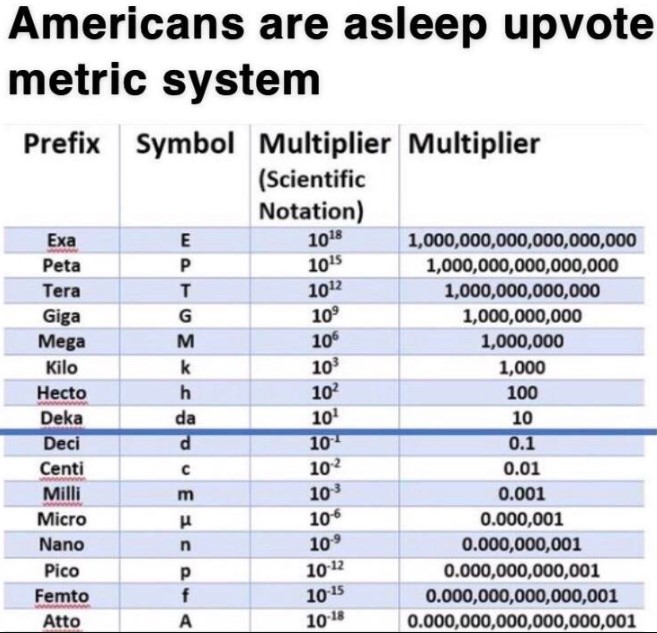this post was submitted on 31 Jul 2023
1509 points (97.5% liked)
Memes
45673 readers
719 users here now
Rules:
- Be civil and nice.
- Try not to excessively repost, as a rule of thumb, wait at least 2 months to do it if you have to.
founded 5 years ago
MODERATORS
you are viewing a single comment's thread
view the rest of the comments
view the rest of the comments

The power of 2 version 2^10 or 1024, is indeed a result of the binary system, and since that's how computers work, that's what everyone used, but by listing a 1 billion byte disk as "1GB" instead of its actual, measured quantity, which, in gibibytes, I billion bytes is actually 953.67 MiB, companies can artificially inflate the perceived size of a disk, instead of buying a 953 MB disk, you're buying a 1GB disk and only getting 953 MiB as a result.
It makes the disk look larger than it is on paper and almost every newcomer to technology has questioned this at some point, and been disappointed that the x GB disk is nontrivially smaller than they expected.
It's a technicality that is disengenious, and creates confusion. All the disk makers had to do was conform to the same number of bytes per kB, and kBs per MB... Etc, that literally everyone else was using, but they wanted to deceive people about it, I guess. Make their marketing look better than the competition.... There's a few disk makers out there that are more or less reversing the trend, but the damage is done. It's why the MiB and GiB (etc) terms even exist.
K being 1024 only makes sense for RAM and ROM which are addressed with a particular number of address lines where the addressable size is 2^(number of address bits). Flash memory, and rotating media have entirely different addressing structures so normal SI units work bettor for them, and just about everything else.